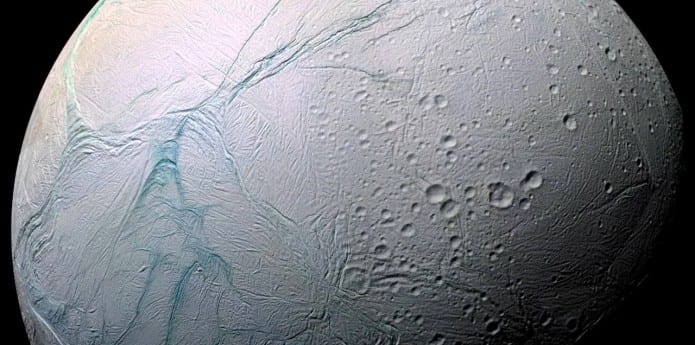Table Of Contents
NASA to launch two probes on Saturn’s Moon Enceladus for searching aliens
Nasa draws up ambitious strategy to investigate for alien life on the icy moons of Saturn and Jupiter.
At NASA strategies are being made to dispatch two probes within the next 10 years to discover moons for their potential to support life. Astronomers are hoping that the existence of a subsurface ocean on Saturn’s icy moon Enceladus will build thrust for life-hunting missions to the outer solar system.
On Thursday (April 3) in the journal Science, Researchers announced their finding of the deep watery ocean on Enceladus. It confirmed doubts held by many scientists since 2005, when NASA’s Cassini spacecraft spied geysers of ice and water vapor erupting from Enceladus’ south pole.
The first location, already decided on, is Jupiter’s moon Europa, and being considered for the second is Enceladus, a satellite of Saturn. The two bodies are covered in ice, but it’s assumed under that surface are oceans of water, which astrobiologists think are the best chances at finding alien life.
The task to Europa is said to take place in the early to mid-2020s, while the one to Enceladus, dubbed Enceladus Life Finder (ELF), would launch before the end of the year 2021. The ELF project is one of many submitted to NASA’s Discovery Program, which considers and selects missions that are both low-cost and highly focused on specific locations of the solar system.
The Discovery Program received some two dozen submissions, and by next month NASA should have narrowed it down to only a handful. The team of scientists behind the ELF project believes they have a strong chance of winning, however only one finalist will be selected in September 2016.
“I don’t know which of the two is going to be more likely to have life. It might be both; it could be neither,” study co-author Jonathan Lunine of Cornell University told reporters yesterday (April 2). “I think what this discovery tells us is that we just need to be more hostile in getting the next generation of spacecraft both to Europa and to the Saturn system once the Cassini mission is over.”
Cassini arrived in orbit around Saturn in the year 2004 and is currently scheduled to go out in a blaze of glory in September 2017, when it will dive headfirst into the giant planet’s thick atmosphere.
The oceans of Enceladus can only be found beneath miles of ice, so trying to collect samples of the environment from a landed mission wouldn’t be realistic. Instead, ELF plans to collect from the geysers discovered in the year 2005 on Enceladus’ south polar region.
Enceladus’ geysers blast material hundreds of miles into space, offering a way to sample the moon’s subsurface ocean from afar.
Cassini has already done some of this work with its mass spectrometer, detecting salts and organic compounds — the carbon-based building blocks of life as we know it — in Enceladus’ plumes during flybys of the moon.
But Cassini’s mass spectrometer can detect only relatively light organics. Lunine said, a follow-up mission to Enceladus should sport a more advanced and more sensitive version of this instrument that could spot a wider range of organics.
Interestingly, astronomers announced in December that they had discovered plumes of water vapor erupting from Europa’s south polar region as well. So that moon’s ocean could be sampled during flybys, too — perhaps by a mission called the Europa Clipper.
NASA is developing the Europa Clipper as a concept mission at the moment. Recent estimates have pegged the mission’s cost at around $2 billion. That’s pretty steep in these tough economic times, so a scaled-down version might have the best chance of getting it off the ground, NASA officials have said.
Enceladus and Europa aren’t the only icy moons that harbor subsurface oceans; Jupiter’s enormous moon Ganymede also has one, for example. But Ganymede’s appears to be sandwiched between layers of ice, while the seas of Enceladus and Europa are in contact with rocky seafloors, making possible all sorts of interesting chemical reactions, researchers say.
As a member of the ELF team says, “It’s free samples, we don’t need to land, drill, melt or do anything like that.” The plume from the icy jets were discovered, and have been flown through, by Cassini, however that spacecraft isn’t built to check for alien life. This would be ELF’s exact goal, meaning if it’s selected by NASA, the project would have a distinctive purpose within the low-cost program.

